Search For Atlantis Update: June 2004 Andros Report by Greg Little Late Friday June 4, Lora and I returned to the states after a brief, but fruitful, trip back to Andros island, the largest island in the Bahamas. The trip was actually planned for later in the summer, but after we returned from Guatemala (Piedras Negras), we received a phone call from a production team working on a National Geographic documentary. The documentary is part of a new series and is scheduled to be shown in November/December 2004. The show is focusing on three possible locations for Atlantis: Malta, Thera, and the area of the Gulf of Mexico, the Caribbean, and especially Cuba. Andros Platform We met the British film crew in Nassau just after they finished filming at Malta and other sites in the Mediterranean. Then we flew to Andros and went to the site of the underwater platform discovered last year. We arrived at an unusual time. It was low tide and it was the full moon. The water was at least 3-feet lower and, for the first time, relatively calm and clear. Over the past year several large storms hit Andros. These storms moved around vast amounts of a dense, sticky white sand, which is now covering many portions of the platform. In fact, several areas we specifically planned on investigating were essentially buried in the white, sticky sand. Trying to brush the sand away resulted in a massive cloud of silt obscuring a large area, and the lack of water movement kept the silt suspended in the water. While the layer of sand covering many areas of the platform was a disappointment, we were pleasantly surprised by the opposite also occurring. The same storms that covered parts of the platform in sand had also uncovered many areas of the formation that we previously hadn't seen. With the extremely clear water conditions, we were able to get good underwater video and photographs of new areas of the formation. We found several areas where large blocks of stone were sitting atop other blocks of stone. Some of these resembled stone stairways we have seen at Maya sites. The formation continues to look manmade but efforts to identify the exact origin of the formation will have to be rushed. The reason for this sense of urgency is something unexpected. Dense coral was found forming on exposed sections of the platform nearly everywhere. Its growth rate is astonishing, especially since it had not quite been a year since we last viewed the formation. In addition, the new layer of sand is promoting the rapid growth of turtle grass in large areas. We estimate that the amount of turtle grass on the formation is perhaps 5-10 times more than was present last year. As a consequence of the coral and grass growth, for the first time we observed numerous fish in the area. Samuel Rolle's Temple Site One of the major reasons we decided to work with the film crew was that their producer had viewed the DVD documentary we made of the 2003 Andros trips. He was quite interested in interviewing Mr. Rolle, who lives at Mangrove Cay, about 60 miles south of Nicholls Town (the location of the Platform). In early 2003, the then-94 year old Bahamian took us to the top of a 100-foot tall limestone outcrop and told us that an ancient temple once stood there. Mr. Rolle had sold many of the building blocks from the site decades before, but we could clearly see what seemed to be the ancient foundations of a multitiered structure. In addition, Mr. Rolle related that the site had been the location of several important meetings of the world's leaders in truly ancient times. According to Mr. Rolle, Andros was much larger then and was very important. He related that he knew about the meetings because he had been there—in a past life. Interestingly, he told us that we had been there too. As an interesting side note to this, I was interviewed by Whitley Strieber in late 2003 for his weekly radio show. The topic of the interview concerned the expeditions to Andros and the book The ARE's Search for Atlantis as well as the documentary video we produced. Whitley watched the documentary just before doing the interview with me. He had been deeply affected by Samuel Rolle. In fact, that was all he wanted to discuss. The interview was good, but definitely unusual. Whitley subsequently received quite a few emails from listeners who asked him about the "unusual" nature of his interview. He eventually replied that when he started the interview he had a vision of sorts with Mr. Rolle in it. Samuel was relating important messages to Whitley during the interview. Interestingly, for perhaps two weeks after the interview, Whitley continued to report that he was still having some visionary contact from Mr. Rolle. I want to stress that I greatly respect Whitley and believe in his honesty and reliability. When we arrived at Mr. Rolle's in June, he had deteriorated mentally and physically. I had been apprised of this before our arrival but we still hoped to get some good material from him. Samuel is now 96 years old and by his own admission, he is about to leave us. Lora, who is a faithful volunteer in hospice, spent about 30 minutes alone with Samuel. He revealed that he had been having spiritual visions, but he really doesn't want to "let go" of taking care of the temple site quite yet. Nevertheless, Samuel basically made one of grandsons "Keeper of the Temple" a few weeks ago. The grandson was astonished to hear some of the things Samuel confessed: especially that he had sold many truckloads of building blocks from the site. As Samuel related to us last year, that act represented "his only regret in life." The grandson was also unaware of Samuel's idea that he had been there in a past life. Because of Mr. Rolle's rapid physical decline during the past year, the grandson took us all to the temple site, located a few hundred yards up a hill from Samuel's house. The film crew shot lots of film showing a few building outlines and remaining stone blocks as well as several brief interviews with the grandson. Only a week before we came, Samuel asked the grandson to go to the temple site and remove some of the brush and growth that had covered it during the past year. During this work, the grandson and another worker found something amazing. Near the temple site, they found a pile of large rocks with a diameter of roughly 3-feet. They decided to remove the rocks. But as they reached the level of the limestone surface, the piled rocks continued to go down into what appeared to be a hole in the surface. They continued to remove rocks from the hole until they went 12-feet straight down. At the bottom they found a wall of stones, which they removed. The hole opened into a 40-foot long horizontal cave or tunnel with the bottom covered in midden and debris. In the tunnel they found the jawbone of a small animal, which no one recognized. The production crew took the jawbone with them to an expert in Chicago. In addition, several large conch shells were found in the lower tunnel. The shells had holes bored into the ends. On film, the grandson demonstrated how blowing into the hole produces a loud horn-like sound. In brief, what we theorized about the site has now been confirmed. It was definitely a lookout point over the ocean and the vast mangrove forest to the west. At the very least, the site was used by ancient Native Indians. We plan on conducting some additional work at this site. Interestingly, last year when we discovered the site, we notified several Bahamas officials. We never received an acknowledgement or reply. Cuba Update Later that afternoon, Lora and I were interviewed by the beautiful shore of the Seascape Inn at Mangrove Cay. We related that the research we have been conducting is based both on Plato as well as Edgar Cayce. We believe that Atlantis was a vast island empire, which was destroyed at the end of the last Ice Age. The Carolina Bays event, now dated to 10,500 B.C. by physicists, was the culprit. A fragmenting comet broke into two large pieces, which struck the Atlantic Ocean. Millions of smaller fragments hit the eastern coast of America as well as the islands in the Gulf and Caribbean. Massive flash fires instantaneously burned the islands and minutes later a series of massive tidal waves swept the islands clean of structures and human life. The maritime culture of Atlantis extended from Spartel Island at Gibraltar, through the Azores, to the much-larger Bahama Islands of the Ice Age, and on to Cuba. In one cataclysmic flash, the maritime empire of Atlantis was literally wiped from the face of the earth. While we were initially asked to go to Cuba with the production team—even visiting Zapata...a location which may conceal the Center City of Atlantis—it was impossible without a 45-day advance notice. Through Andrew Collins (who is appearing at an ARE headquarters conference July 8-11), the crew managed to contact ADC, the Canadian group who announced in 2001 their discovery of ruins on the bottom of 2200 feet of water at the extreme western tip of Cuba. (The stones were initially located through side-scan sonar.) The British film crew had worked for weeks trying to obtain visas to Cuba, but until the day before they left, their efforts had been frustrated. When we left for the states, they left for Cuba. At Cuba, the plan was to interview the ADC team and obtain some of their underwater footage. In brief, since that footage was obtained several years ago, nothing else of consequence has been done at the site. ADC continues to search for gold-laden Spanish galleons in Cuban waters, working on a specific contract with the Cuban government. The Andros Platform & Bimini Road In the ARE's Search For Atlantis, we theorized about the Bimini Road and the Andros Platform, which eerily resembles the Bimini Road. We suggested that the structures could have been building platforms, but were probably breakwaters enclosing harbors with a quay nearby. Based on conversations with an archaeologist, we now lean toward the idea that both the Bimini Road and Andros Platform were at harbors, but the actual formations were probably elevated building platforms similar to some associated with ancient Mediterranean harbors (8000-years old or more). These harbors were constructed with beachrock, which in the Mediterranean is called kurkar. The confirmation of a lookout at Mr. Rolle's temple site some 60 miles in distance supports the idea that the deep channel running next to Andros was a shipping lane in ancient times. The Bimini Road and the Andros Platform would have been ideal stopping points for ships making the journey from the Atlantic to Cuba. Coming Plans We intend to do more work at Andros in 2004 at both the Platform site and the temple site. In addition, based on how the ancients located harbors, we suspect that there are at least two more sites in southern Andros that may reveal ancient harbors. We plan on making water expeditions to several areas. Later this summer we also plan to visit an island reportedly covered in ruins and an ancient underwater harbor off the Yucatan. While the site has received virtually no publicity, it was discovered by mainstream archaeologists several decades ago. John Van Auken and his wife Doris are scheduled to accompany us on this trip—and it promises to be extremely interesting. Ancient Mysteries Conference On October 7-10, 2004 we will present video from the April Piedras Negras, Guatemala expedition, a video update on Andros, and a video report on the visit to the Yucatan underwater harbor. A special DVD documentary on the Lost Hall of Records will be available at the conference and the 68-minute DVD documentary detailing the 2003 expeditions to Andros and Bimini will be lengthened and will incorporate the new findings. | ||||||||||
Below: Photos of the underwater Andros Platform, copyright 2004. | ||||||||||
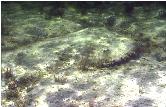 | ||||||||||
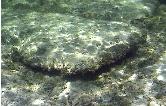 | ||||||||||
 | ||||||||||
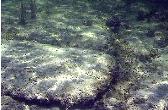 | ||||||||||
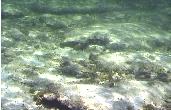 | ||||||||||
 | ||||||||||
 | ||||||||||
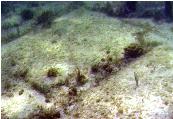 | ||||||||||
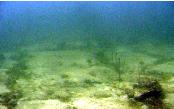 | ||||||||||
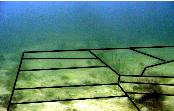 | ||||||||||
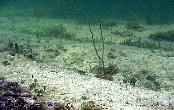 | ||||||||||